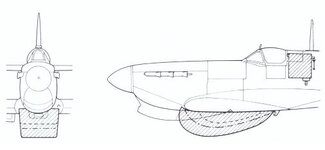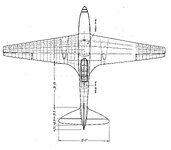Only range figures I've seen for the Spiteful was 564 miles on internal fuel and 1315 miles with drop tanks (Old Machine Press' article on the Spiteful and Seafang).
I know, this is why I've said that math does not add up.
See here for Seafire 47 mileage. Also see here for Spitfire XIV doing 490 miles with allowances on 120 imp gals, and 640 on 150 gals.
Both of these were draggier than the Spiteful. OTOH, it is very much possible that Spitfeful was not using the rear tank in service.
However, I'd bet that a Merlin Spiteful would've been a good deal lighter than the Griffon version, and probably less fuel thirsty.
This is an idea with a merit IMO.


